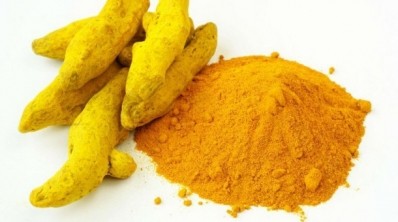Consumer demands placing more pressure on flavor, texture of sports nutrition products

The history of sports nutrition products is littered with odd tasting products that promised powerful functional benefits. And it was those benefits that attracted the hardcore consumers, gym rats who ascribed to the no pain—no gain theory, with that pain extending to choking down bad tasting glop. Experts contacted by NutraIngredients-USA said the era of one-size-fits all flavors for sports RTDs, protein powders and other similar products is pretty much over. Formulation innovation in the past decade means that many products that offer functional benefits are pleasant tasting, and those with lackluster flavor profiles are finding it harder to compete.
Flavors come to forefront
“I’ve seen how things have developed in Europe,” said Michael Hiron, VP of sales for human nutrition ingredients for protein supplier Milk Specialties Global. “The bulk of consumers who were consuming whey proteins or some of the green type supplements were body builders. It was a niche segment. They’d consume whatever they were given and the worse tasting the better. But now supplements are seen as a luxury expense and they have to deliver on that consumer experience.”
While there has been a significant amount of flavor innovation (MusclePharm even introduced an ‘orange creamsicle’ flavor a few years ago), some things never change. Tried and true flavors continue to hold center stage, but a flavor expert said the precise chemical profiles of those flavors are changing.
“Chocolate, vanilla, strawberry—these have always been the standard flavors,” said Will McCormack, PhD, business development manager for Synergy Flavors. ““While identifying new and innovative flavors remains important, finding THE best of the core profiles for your product is crucial to success. You have to understand your price point, understand the callouts you want to make on your label.”
Delving into ingredient specifics
McCormack said as consumers get more demanding about taste and texture issues, they have become more educated about ingredient issues, too. This has led ever more sports nutrition formulators to delve into natural flavor alternatives to meet these consumer demands. The exercise then becomes a balancing act between what consumers seem to be asking for and what they’re willing to pay for.
“You have to understand what your consumers are looking for and build the product back from there. Finding the right flavor is like having a tool box. The tool box can be expansive or it can be cut down,” McCormack said.
“If for example a customer comes to us and says they just want their protein product to taste great without a preference for flavor designation or sweetener system, we can make a great tasting flavor, no problem. If they are seeking differentiation with all natural flavors or even organic flavors, then the tool box gets smaller. But that tool box for natural flavors has exploded in recent years and that has been driven by consumer demand,” he said.
Challenges of high protein inclusions
The push toward every higher rates of protein inclusion has provided most of the inflation for this innovation balloon. In the past, high protein products had mouth feel and taste issues, such as bitter, off notes or chalkiness or grittiness, that were challenging to work around. Protein suppliers, especially those with potentially bitter tasting ingredients such as some hydrosolates, have worked hard to come up with alternatives that taste better and offer better mouth feel.
“The protein beverage market has been rapidly evolving in the past few years. In the past it was almost exclusively for high intensity athletes with the occasional general consumer looking for a meal replacement. The current market is reaching to a much more broad demographic and type of consumer. This is forcing the market to evolve with the consumer. With the new found consumers, taste is still king and will likely always be,” said Paige Ties, senior technical services specialist with Cargill.
“When formulating with proteins, all developers have experienced challenges in flavor and texture with high levels of protein fortification. When you start to push the upper limits of protein addition, there can be inherent astringency, bitterness and other off flavors associated with the proteins. The level of off flavors is very dependent on the type of protein, any modifications, degree of denaturation, pH of the system and many other factors. Even within the same source of protein, you can see very different flavor profiles, which tends to be dependent on the processing of the protein,” she said.
Tyler Lorenzen, president of pea protein supplier Puris, said trying to bring in new consumers has helped drive flavor innovation and had raised the bar for texture for products across the board. Puris has spent years breeding strains of peas that deliver on a better tasting pea protein with a smoother, creamier mouth feel.
“ Flavor and great taste is key for any diet regardless if you are training for performance or lifestyle. Performance nutrition enthusiasts may have a higher tolerance to poor flavor but why should they compromise?” he said.
“Flavor fatigue is absolutely a challenge for the constant protein drink user. In my pro football days, I would consume more protein shakes than I would like to admit and at times, chocolate and vanilla weren’t enough. Today, you see a lot more fruit, decadent, and coffee flavors. Certainly, these more adventurous flavors are preferred by some, but I do believe chocolate and vanilla will continue to be the staple flavor choices,” Lorenzen said.
Making the proteins themselves taste better
McCormack said with all of the development work around protein ingredients, there really are very few left in the market that don’t offer superior mouth feel and are easy to work with from a flavor standpoint. That’s key to growing the category, as now more consumers apply the same point of purchase metrics for a sports RTD or protein powder as they would for any other food product.
“You can pull from any data set you wish, Mintel or others, and among the factors that consumers say influence their purchases, flavor is definitely one of the top three. The process of producing milk proteins has evolved. Twenty years ago, dairy proteins could be challenging from a taste perspective. Now it's really difficult to find a bad tasting whey protein in the market, for example,” McCormack said.
“That same process is now happening on the non-dairy side. Puris has one of the cleanest pea proteins. That product is miles away from what a pea protein would have tasted like a decade ago. That’s happening across the board—soy protein 10 years ago was a pretty challenging ingredient and now its better. That will happen with other ingredients like algal proteins or yeast proteins,” he said.




















